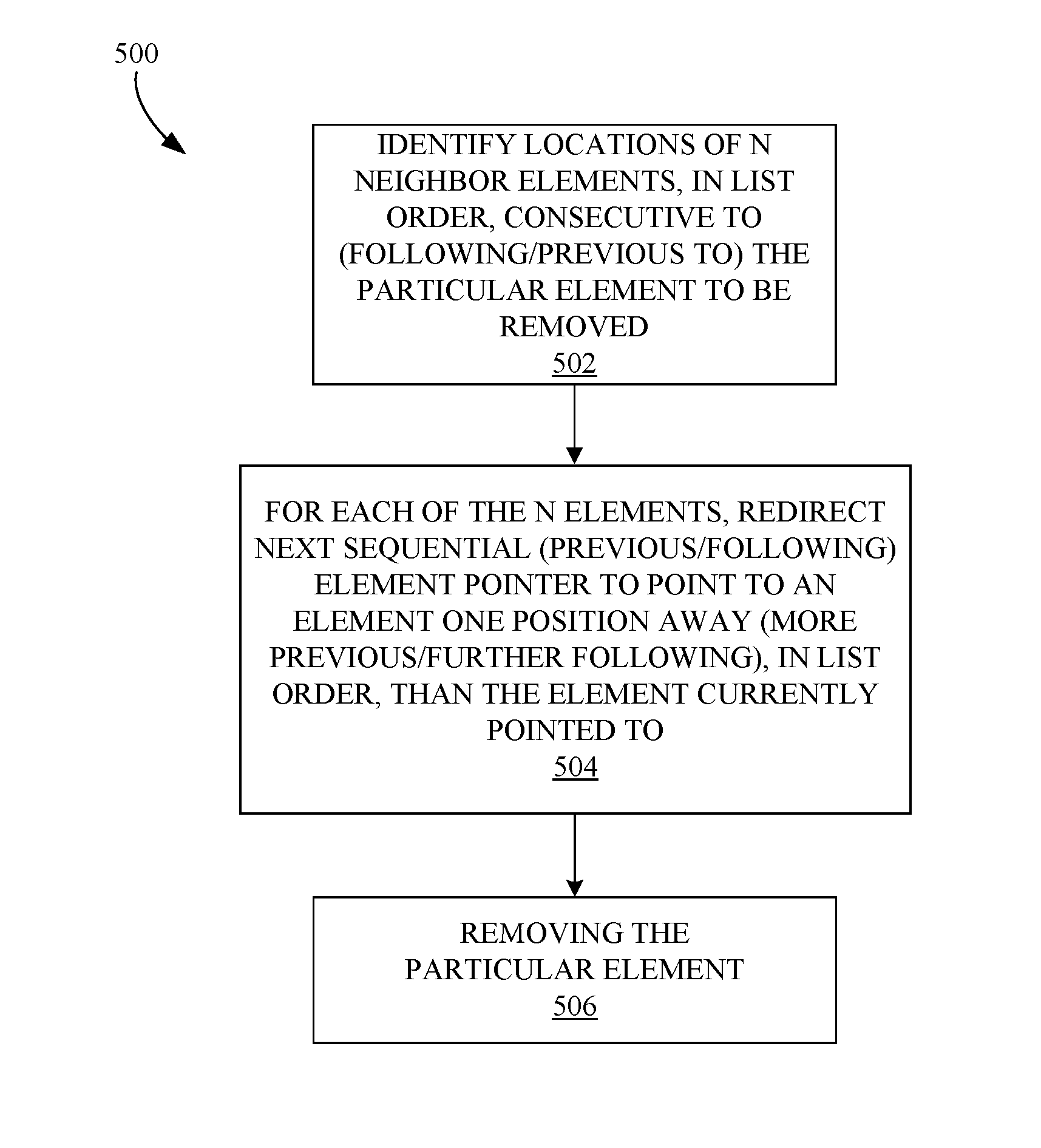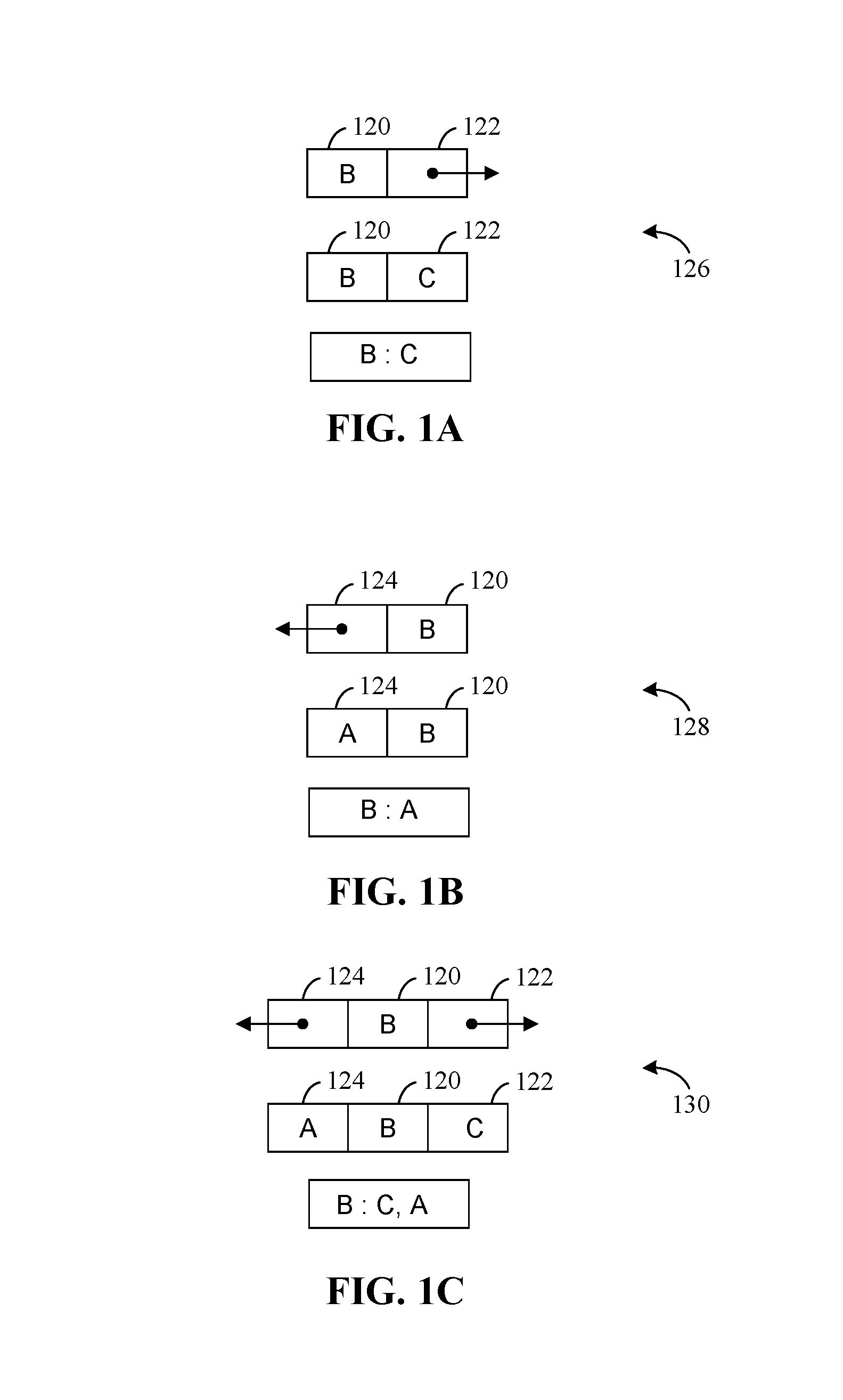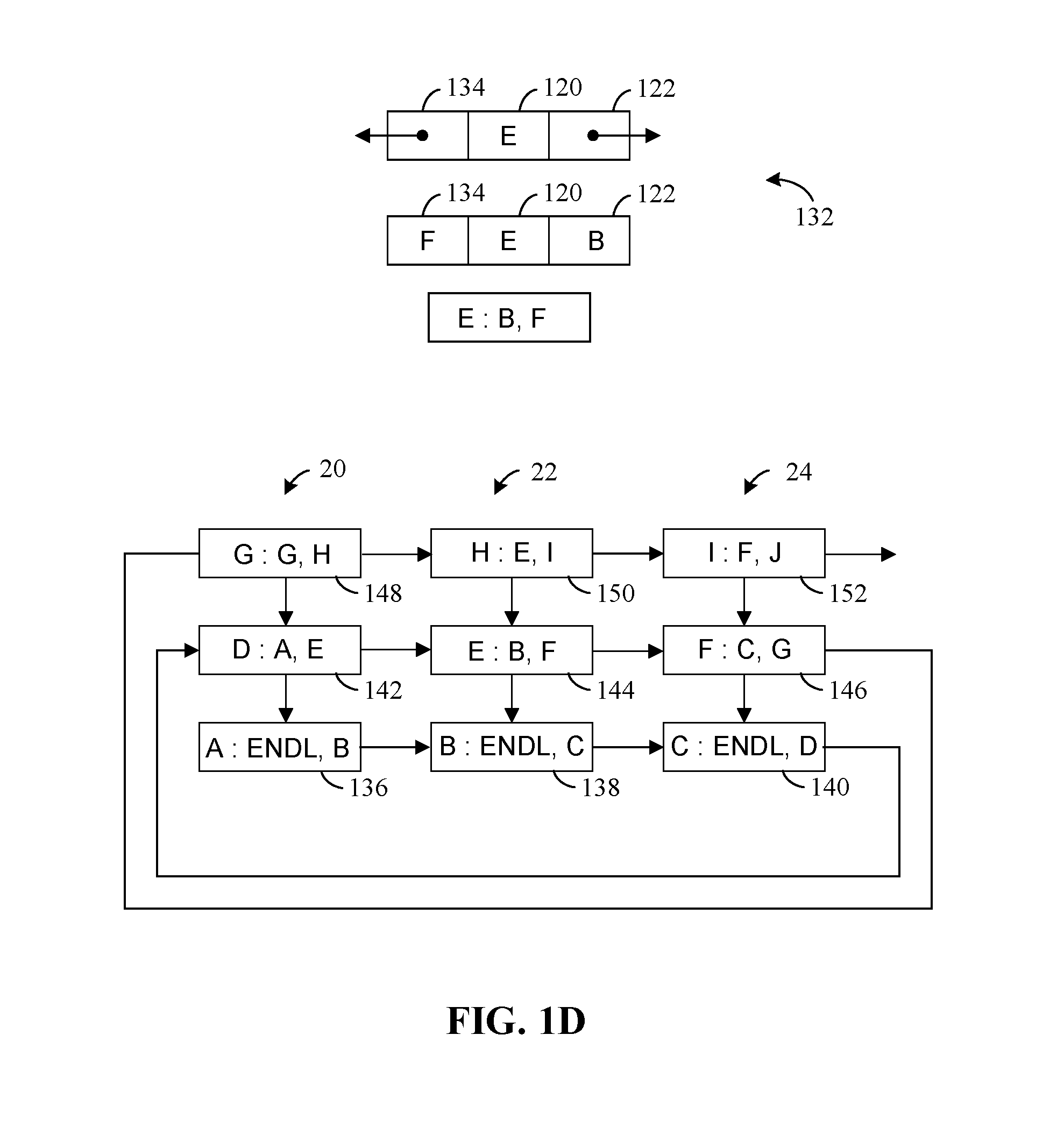Atomic memory operations on an n-way linked list
- Summary
- Abstract
- Description
- Claims
- Application Information
AI Technical Summary
Benefits of technology
Problems solved by technology
Method used
Image
Examples
Embodiment Construction
[0038]A variety of examples are presented in this Detailed Description. These examples may be referred to as exemplary. Note that the term “exemplary,” as used in this Detailed Description, simply means an example, instance, or illustration. This term is not used to mean that a particular example is superior, commendable, or otherwise deserving of imitation over other examples.
[0039]Accessing an N-Way Linked List
[0040]An N-way linked list according to various embodiments includes elements for storing data, two or more sub-lists, and a handle. The handle may include tail elements, head elements, or both for each of the sub-lists. The handle may be an array of handles for individual sub-lists. In addition, parameters that track the number of elements added or removed from the various sub-lists may be associated with an N-way linked list. Exemplary “ITAIL” and “RTAIL” parameters for tracking the addition and removal of elements are described below.
[0041]Referring to FIGS. 1A-1C, an ele...
PUM
 Login to View More
Login to View More Abstract
Description
Claims
Application Information
 Login to View More
Login to View More - R&D
- Intellectual Property
- Life Sciences
- Materials
- Tech Scout
- Unparalleled Data Quality
- Higher Quality Content
- 60% Fewer Hallucinations
Browse by: Latest US Patents, China's latest patents, Technical Efficacy Thesaurus, Application Domain, Technology Topic, Popular Technical Reports.
© 2025 PatSnap. All rights reserved.Legal|Privacy policy|Modern Slavery Act Transparency Statement|Sitemap|About US| Contact US: help@patsnap.com



